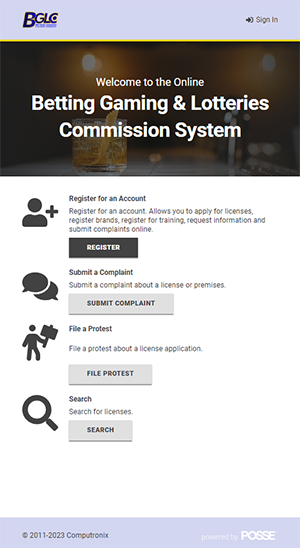Today’s government gaming regulators are being asked to manage a difficult and often contradictory set of priorities. On one hand, the rapid growth of online wagering opportunities is creating an unprecedented scope of new licensing and revenue opportunities contributing to a massive taxation largesse. On the other hand, the ready convenience of online betting apps and the current ubiquity of gambling advertising presents significant challenges in protecting citizens ‘at risk’ from gambling addiction related behaviors.
To navigate this oft conflicting agenda to maximize tax revenues while simultaneously providing a secure and safe gaming environment for citizens, today’s government gaming regulators are increasingly reliant on providing ‘problem’ gamblers with an available environment for temporary or permanent self-exclusion. In contrast to the Responsible Gaming Model which is intended to protect all citizens by establishing and publicizing key betting limits and wagering ‘guard rails,’ self-exclusion is the nuclear option that willingly sacrifices government gaming revenues by prohibiting at risk gamblers from transacting. Proven effective as a tactic for both protecting and rehabilitating problem gamblers, self-exclusion models typically fall into one of two categories:
Given the inherent limitations of any governance model designed to curb self-destructive behaviors, the efficacy of self-exclusion tactics often boils down to how invasive a jurisdiction chooses to be in the application of such prohibitions. Interestingly, given the history of gambling regulation, the most stringent self-exclusion models are often found in the most mature gaming markets like Scandinavia, Germany, Australia, and the United Kingdom, where a long history of legal gambling has informed regulators with a wealth of longitudinal data on the benefits of consistent and stringent self-exclusion options for at risk individuals. Compared to relatively newer gambling markets like the United States and Canada where regulation typically (albeit not always) assumes more of a business-friendly, laissez faire approach, punitive tactics that can fine both operators and individuals alike for contravening self-exclusion barriers—while effective—are often seen as too heavy handed for North American gaming regulators to consider as feasible enforcement tactics.
Establishing how to manage the self-exclusion balancing act is one of the most crucial decisions a gaming regulatory agency can make. To avoid potential hurdles to effective enforcement, it is beneficial to consider both the potential and inherent weaknesses of the various self-exclusion models that exist today:
Assuming a jurisdiction is successful in clearing this first key hurdle to engender sufficient uptake within their self-exclusion model, further hurdles lay in wait:
In particular, the ability of compulsive or addicted gamblers to easily evade self-exclusion bans by transacting with unlicensed online operators represents the largest hurdle preventing an effective self-exclusion model. Currently, only Germany, Norway, and Sweden, stringently enforce a self-exclusion model that covers both land-based and licensed online gambling across the entirety of their operational footprint.

With the hurdles to self-exclusion sustainability clearly defined, regulatory agencies can focus their energies on the tactics that create a foundation for a sustainable self-exclusion model as follows:
With these foundational resources in place, those jurisdictions seeking a more robust self-exclusion model with enforcement ‘teeth’ comparable to more stringent regulatory regimes can consider the following tactics.

Whatever path your agency pursues to protect your at-risk citizens to provide them with a safe and secure gaming environment, be it a robust individual self-exclusion model and/or a supply side exclusion model leveraging responsible gaming guard rails, the data management abilities of your chosen Gaming Control Software solution will play a pivotal role in your efforts to achieve effective compliance and enforcement in this endeavor.
Whether you are an agency operator facilitating your own branded gaming offering OR a regulator facilitating oversight of licensed third-party operators, it is mission critical that your Gambling Control Software can effectively integrate with and exchange information with the full range of gaming systems and software facilitating today’s online and bricks-and-mortar offerings. By leveraging the capabilities of big data within your own internal gaming control system, your agency can facilitate a true closed-loop, automation assisted process to monitor and manage both internal and licensee compliance with your current self-exclusion regulations.
Leveraging a POSSE GCS System that seamlessly correlates your complaint > investigation > enforcement > remedy process directly to the applicable licensee profiles, your agency can closely monitor and manage the status/outcomes for reported self-exclusion and advertising infringements, with POSSE GCS enabling the flagging of those operators failing to comply with current regulations and legislation. Once flagged, POSSE GCS users can notify licensees of the steps need to reconcile potential licensing infractions including appropriate fines to be paid or remedies to be actioned, the available appeal process, or even potential license loss for excessive self-exclusion infringements when warranted.
For those progressive agencies seeking to implement a proactive self-exclusion model, where these efforts may ultimately lead is a broader organizational awareness of the capabilities of your regulatory regime and gaming control system to function in tandem as sustainable public health infrastructure to protect your most at-risk citizens. While the prevalence of those suffering from legitimate gambling addictions is often greatly exaggerated as a percentage of the larger whole, it is nevertheless worthwhile to keep in mind the words of Mahatma Gandhi who said, “The true measure of any society can be found in how it treats its most vulnerable members.” While Gandhi undoubtedly did not have a self-exclusion model in mind when he spoke these words, the quotation nevertheless offers a clear guidepost for government gaming regulators striving to balance the potentially contradictory goals of maximizing gaming revenues whilst simultaneously protecting the welfare of its most vulnerable citizens. It is to these mutual ends that an effective self-exclusion model empowered by robust gaming control software can meet the needs of all citizens.